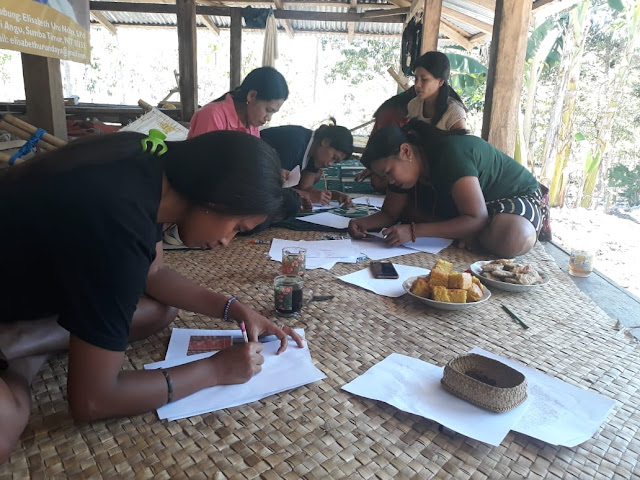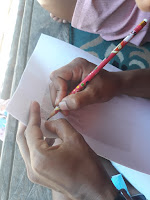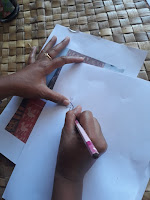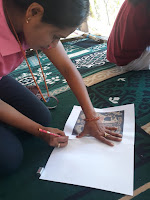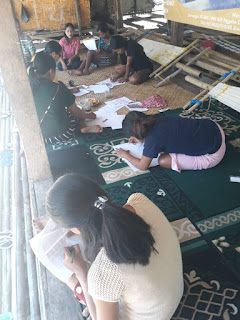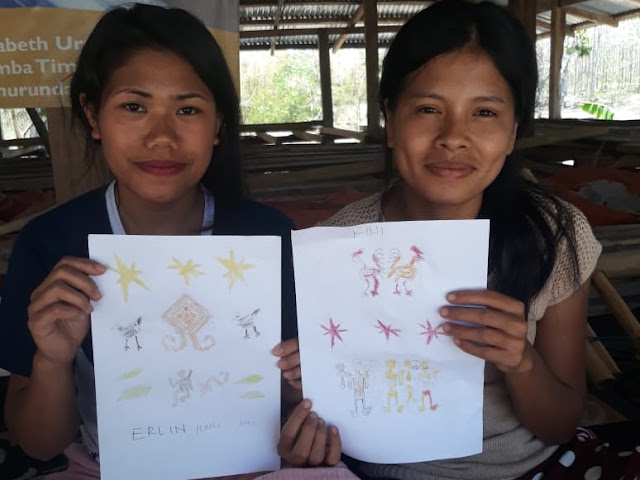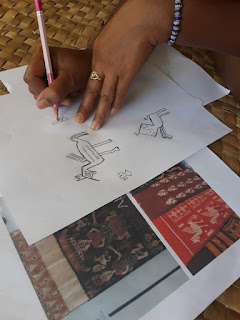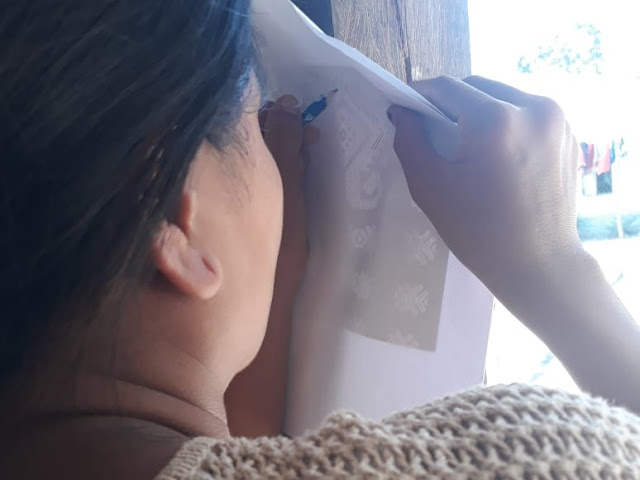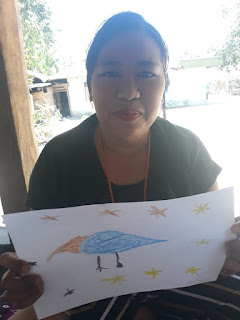Exploring the Motif Design of Sumbanese Tied Weaving
Monday, 19 October 2020by Elisabeth Uru Ndaya, S.Pd
It is important to maintain the values and tradition of the ancestors so the existing cultures and diversity are not eroded by time. As a beginner, the Tanatuku weaving group continues to be enthusiastic in practicing weaving step by step. This time, they explore the motif design of Sumbanese tied weaving.
The training on October 7 and 17, 2020 invited and directed the participants to design woven motifs on sheet of paper with various motifs, such as horse, rooster, mamuli, human, flower, dragon, and house. The process is felt hard because those who invited to draw were no longer pupils or kindergarten children, but students, youths and mothers. Some of them admitted that they never drew anything since they were young, so when they were given a sheet of paper and stationeries, they looked confused and afraid to start. Some others tried to draw a horse motif but the drawing did not look like a horse. However, the available printed sample motifs made them easier to practice drawing motifs.
There are many levels of difficulty they face during working the weaving, but it does not dampen their enthusiasm to keep practicing. A professional weaver is required to have creative ideas to design motifs, in addition to produce the uniqueness of the group's design motifs. There are three parts of woven patterns or motifs that are known in East Sumba, such as the figurative part, which is representation of human and animal patterns, the schematic part, which resembles a series of charts, geometric shapes, and forms of foreign influence, namely the cross, lion, crown, petola pattern (Indian cloth) or dragon (Chinese cloth).
The uniqueness of the design created is a work that reflects elements closely related to the culture of the region itself. The following are examples of motif variations based on production areas in East Sumba.
(1) Kambera district has 18 motifs, such as patuala ratu (Patola cloth), Habaku (Flying lizard), Karihu (Butterfly), andung (skull monument), mahang (lion), kurang (shrimp), manu (rooster), wuya (crocodile), karawulang (tortoise), lodu (sun), wulang (moon). (2) Kanatang district has three motifs, namely ruha (deer), mahang (lion), kaka (parrot). (3) Pahunga Lodu district has 11 motifs, namely Andung (skull monument), mahang (lion), kurang (shrimp), habaku (flying lizard), wuya (crocodile), karawulang (tortoise), karihu (butterfly), mandu (snake), kaka (parrot), ngganda (a type of flower), tanga wahil (betel container), and (4) Kaliuda has 3 motifs, namely horse, rooster and coastal bird.
The motifs above are the works of 3 out of 22 districts in East Sumba. Thus, it can be concluded that only three districts have been working on tied weaving. Therefore, the existence of Tanatuku weaving group is expected to represent the district of Nggaha Ori Angu for tied weaving in East Sumba with their own patterns or motifs. Hopefully the learning spirit of the weaving group will last and finally will bring out skillful weavers to produce woven cloth of East Sumba.
